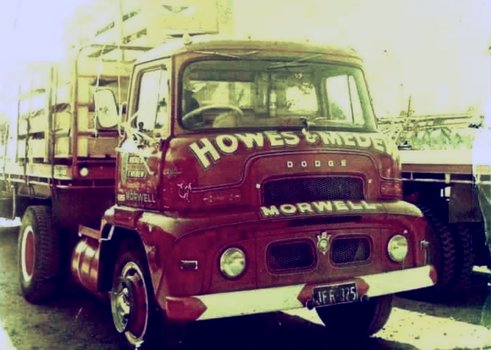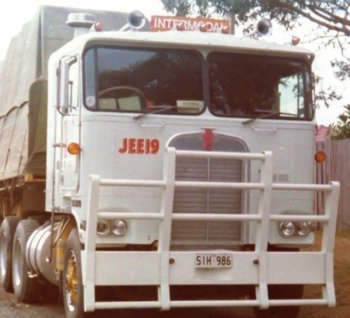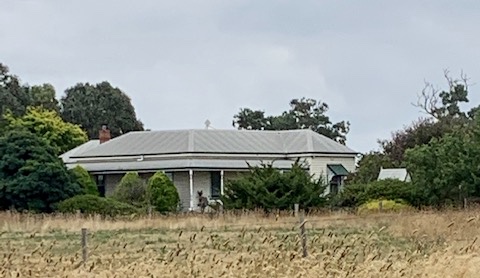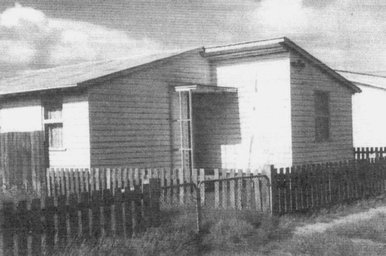Looking Back
By Leo Billington

1950’s/1960’s road transport services
During the post-second world war years in Morwell, businesses providing road transport services seemed to proliferate. Early businesses included D J McCormick, based in McDonald Street, Bill Doyle, Mary Street, Rhodes and Perkins, New Street, Palmers, Latrobe Road, Mortimer Brothers, Chapel Street, Kennedy Haulage, Driffield Road, Jim Catterick, bus service, S Broadbent, Princes Highway, Morwell, Fred Murray, Quigley Street – specialising in furniture removals and storage, H Smith, Churchill Road, and there were more.
One company that expanded as Morwell and its surrounding district grew was Howes and Medew. Providing local and interstate transport services, the company was eventually acquired by Mayne Nickless (remember them?) in 1972. For road freight services, Mayne Nickless became Intermodal, then Interlink and finally found a new home under Toll Transport in the mid-1990’s.


McDonald Street
The A V Jennings Construction Company Pty Ltd was awarded its largest building contract when in 1948, Moe and Morwell required 1500 homes. In 1949, another lucrative contract was obtained with the then Housing Commission to provide 250 homes in Morwell over a three-year period. The company established its office and depot in McDonald Street, approximately on a site where the former Morwell swimming pool was located. Most building activity was concentrated east of this site.
In July 1951, Morwell Shire Council was given an assurance that McDonald Street would be constructed. Constant lobbying to the Victorian state government highlighted growth of a new housing commission area, increased vehicular and pedestrian traffic, and absence of footpaths.
It was also pointed out that residents were “concerned at the hardships suffered by the housewives on the Housing Commission Estate in negotiating this hazardous outlet to the Morwell shopping area.”
Actually, work in Morwell’s Housing Commission Estate to construction of 8,347 feet of streets comprising forming, grading, and surfacing, together with the construction of footbridges, kerbs, channels, and sub-surface pipe drainage commenced in October 1948. The Country Roads Board (CRB) undertook this work and on June 30, 1949, the street and pavement construction was 90 per cent complete, kerb and channelling 20 per cent and pipe drainage 80 per cent.

Hence, a housing estate was quickly developing with new infrastructure and houses, but the main thoroughfare – McDonald Street – was basically an unmade track.
The CRB established their works depot at the Spry and McDonald Street corner, the present site of Morwell’s fire station. Two houses were provided for CRB managers. One of these houses was relocated to Hazelwood North in 1969.
Readers may remember the McDonald family home once sited where today, sits a United petrol station. The house, rather grand in style, now enjoys a picturesque existence at Flynn. (Please see accompanying photograph.)

Tunnel under the railway
Daily, thousands (perhaps even more) of vehicles whizz past a half-circle shaped concrete tunnel literally “poking its nose out” from under the former narrow-gauge coal railway line as it passes Morwell’s western boundary.
This tunnel once played a significant role in Latrobe Valley’s social, cultural and economic development.

There was a footpath linking Avondale Crescent to the then White City. Previously, the railway line transporting coal from Yallourn to Morwell, when constructed, cut access to the Driffield farming area via Driffield Road at Avondale Crescent.
When the White City was established, the tunnel gave safe pedestrian access under, and not over, the railway line. The tunnel remains as testimony to the post-war development of Latrobe Valley and Morwell in particular. The footpath has long disappeared.
An accompanying picture shows where the White City (so named because all houses were painted white) was located with its delightful English named streets. This small settlement was a marriage quarters settlement, with construction work commencing in May 1951.
For the record, Driffield Road Morwell has long lost its “kids playing on the street” and happy families image. Before the narrow-gauge railway appeared, Driffield Road was an official Stock Route – meaning cattle could be herded along it on their way to or from farms, using railway cattle yards at the top end of Latrobe Road.



